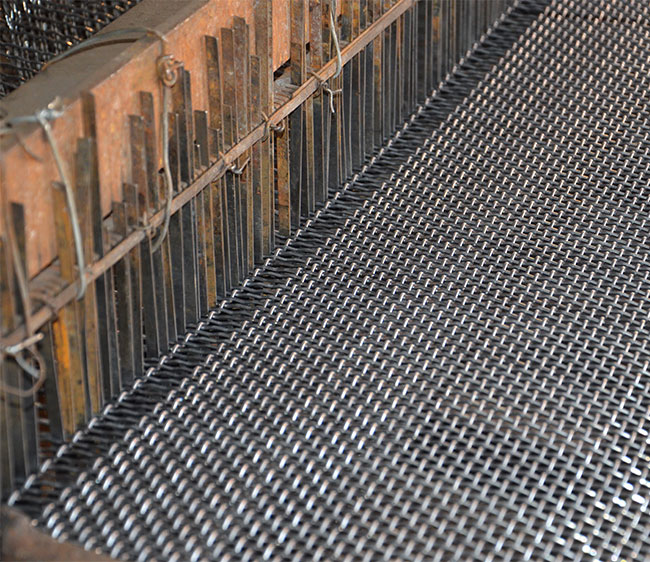aug . 18, 2024 10:49 Back to list
CE Certification Guidelines for Crimped Wire Mesh Products and Applications
Understanding CE Certification for Crimped Mesh A Comprehensive Overview
Crimped mesh is widely used in various industrial, architectural, and agricultural applications due to its versatility, strength, and aesthetic appeal. To ensure safety, quality, and compliance with European standards, obtaining CE certification for crimped mesh has become increasingly essential. This article aims to explore the significance of CE certification, its implications for manufacturers and consumers, and the process involved in achieving this vital accreditation.
What is CE Certification?
CE certification, or Conformité Européenne, is a mandatory conformity marking for products sold within the European Economic Area (EEA). It signifies that a product meets the health, safety, and environmental protection standards stipulated by the relevant European directives. For crimped mesh, which may serve various functions including filtration, reinforcement, and fencing, CE certification assures consumers and stakeholders of its reliability and adherence to legal standards.
Why is CE Certification Important for Crimped Mesh?
1. Safety Assurance The primary significance of CE certification lies in the assurance of safety for end-users. Crimped mesh is often utilized in construction, where structural integrity is paramount. CE certification guarantees that the mesh can withstand required loads and environmental conditions, thereby reducing risks related to structural failure.
2. Market Access For manufacturers, obtaining CE marking is crucial for accessing the European market. Without this certification, products cannot be legally sold within the EEA. This can limit a manufacturer’s market potential significantly, making CE compliance a strategic business decision.
3. Quality Standard CE certification serves as a badge of quality, indicating that a product has been rigorously tested and meets established standards. This not only builds customer trust but also enhances brand reputation. Companies investing in quality assurance through CE certification often outperform non-certified counterparts.
4. Legal Compliance The European Union has stringent regulations governing the safety and performance of products. CE certification ensures that manufacturers comply with these regulations, protecting them from legal repercussions and potential financial losses linked to non-compliance.
ce certification crimped mesh

The Process of Achieving CE Certification for Crimped Mesh
The process of obtaining CE certification involves several key steps
1. Determine the Applicable Directives Different products fall under different European directives. For crimped mesh, the relevant directives might include the Construction Products Regulation (CPR). It is essential to identify which directives are applicable to ensure compliance.
2. Conduct Testing and Evaluation Before certification, crimped mesh must undergo a series of tests for physical properties, durability, and safety. This is typically carried out in accredited laboratories.
3. Technical Documentation Manufacturers must prepare comprehensive technical documentation that provides evidence of compliance with all applicable directives. This documentation should detail the design, manufacturing process, and test results.
4. Notified Body Involvement In some cases, products require assessment by a third-party notified body, particularly if they fall into higher-risk categories. The notified body will review the technical documentation and may carry out further testing.
5. Affix the CE Mark Once all requirements are met and compliance is confirmed, the manufacturer can affix the CE mark to their crimped mesh products, indicating that they meet the necessary safety and performance standards.
Conclusion
CE certification for crimped mesh is crucial for ensuring safety, quality, and legal compliance in the European market. It not only protects consumers but also offers manufacturers a competitive edge in a crowded marketplace. By understanding the importance and processes involved in obtaining CE certification, stakeholders can make informed decisions that benefit their businesses and enhance user safety. As industries continue to evolve, adherence to established standards will remain a priority for manufacturers committed to excellence.
share
-
Premium Stainless Steel Netting Mesh Discount & ODM Stainless Steel Wire Mesh Solutions
NewsJun.24,2025
-
High-Quality Screen Stone for Modern Stone Screen Walls Elegant Facade Solutions
NewsJun.10,2025
-
High Quality Wire Filter – Cheap Stainless Steel Filter Wire Mesh Cloth & Wire Mesh Filter Solutions
NewsJun.10,2025
-
5 Micron Water Filter Cartridge - Premium Sediment Filtration, Universal Fit
NewsJun.10,2025
-
High Quality CE-Certified Gabion Boxes with OEM Options
NewsJun.10,2025
-
20x20x2 Air Filter High-Efficiency Dust Filtration for Clean Air
NewsJun.10,2025

